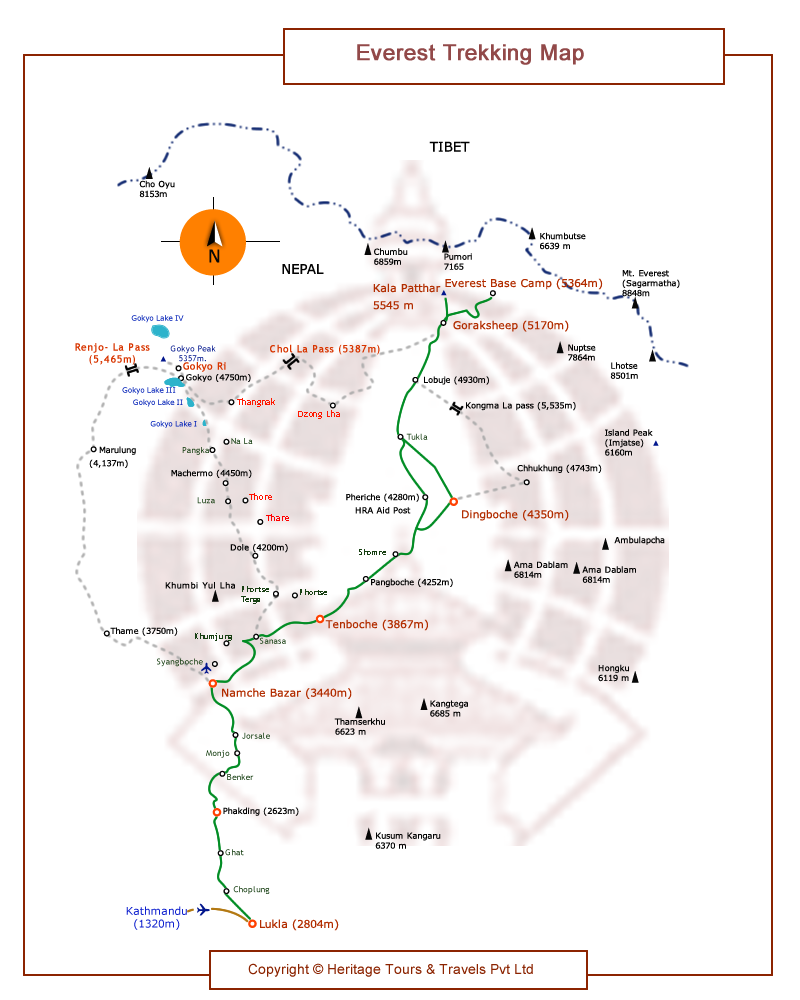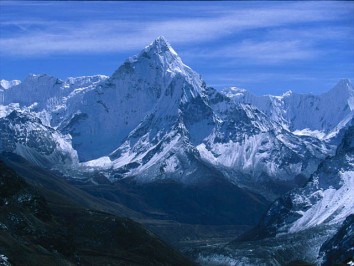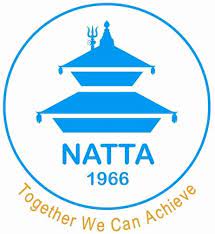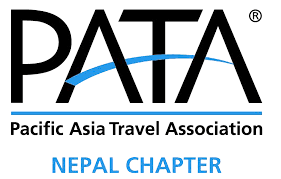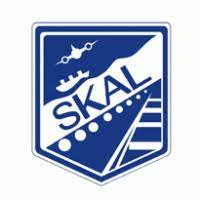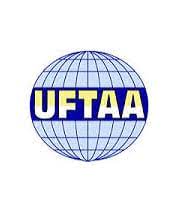Food
Breakfast, Lunch & Dinner
Accomodation
Lodge
Elevation
4371
We will first go down about 250 meters to the Dudh Kosi bank and climb up about 670 meters. It is tiring and you may start showing symptoms of altitude sickness. You are advised to pay attention to your physical condition and to be cautious about your actions.
First, climb the east flank of Namche Bazaar, and you will come to Chokang. On the way, there is a check post where they will check your trekking permit. This procedure can be done a day before. The Dudh Kosi is far down below to your right and you will see Thamserku, Kantega (6,799 meters), Ama Dablam (6,812m), Lhotse, and Everest in front of you. This spot is overwhelmingly beautiful.
The path on the flank meanders down towards the valley. The Hotel Everest View can be seen on the hill above. Stay on the path for a while enjoying the view of Everest and other mountains, enter the rhododendron forest, and you will soon come to Sanarsa, where the path forks into three. The left fork will lead to Khumjung, Khumde, and the Hotel Everest View. The center one that climbs the steep flank goes to Gokyo via Moung La (4,140m). Take the right one to Mt. Everest Base Camp.
From the front of the lodge in Sanarsa, trek down the mountain flank, pass Trashinga into the woods, and you will be on the shores of Kudh Kosi. Cross the suspension bridge to Phunki Tenga(3,190m) .
The path to Tengboche will first climb up a steep slope in the woods. Once you are on the sunny mountain flank, the slope becomes gentler. Follow the path on the right side flank of the ridge, go up on the plateau, and you will reach Tengboche (3,867m) with a Gompa (Monastery). Every year in October, on full moon day, Mani Rimdu festival, with Tibetan Buddhist dance-drama of 14 scenes, is held in this Tengboche Gompa. Overnight at guesthouse/lodge
 Heritage Nepal - Tours and Treks
Heritage Nepal - Tours and Treks
